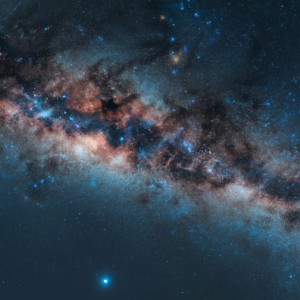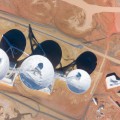The planet earth is an enigma that has fascinated humans for centuries. It is the only known planet that can sustain life as it exists on Earth. The position of Earth in the universe is a central question in astronomy and cosmology. In this article, we will explore the position and role of Earth in the Milky Way galaxy and the universe.
The Milky Way galaxy

The Milky Way galaxy is a spiral-shaped collection of stars, gas, and dust, stretching about 100,000 light-years across. It contains billions of stars, including our Sun. Earth is located about 25,000 light-years from the galactic center. The Milky Way galaxy is divided into four main parts: the central bulge, the disk, the halo, and the spiral arms.
The central bulge is a dense region at the center of the galaxy, made up of a high concentration of stars. The disk is where most of the galactic stars, including our Sun, reside. The halo is made up of sparse clusters of stars that surround the galaxy, and the spiral arms are regions of gas and dust where new stars are formed.
Earth’s position in the Milky Way galaxy
Earth is located in the disk of the Milky Way galaxy. It orbits the Sun, which itself orbits the galactic center. Earth is approximately halfway out from the center of the galaxy, between the central bulge and the outer rim. This location places Earth in the “Goldilocks zone,” an area that is not too hot or too cold for life to exist. The disk of the Milky Way galaxy contains most of the galaxy’s interstellar gas and dust, forming the raw materials for new stars and planets to form.
Earth’s role in the universe
The universe is a vast expanse of space and time, containing billions of galaxies, each containing billions of stars and planets. Earth’s place in the universe may be small, but it is not insignificant. Earth is the only known planet in the universe that can sustain life as we know it. Its location in the Goldilocks zone, the presence of water and a breathable atmosphere, and the protection provided by the planet’s magnetic field make it an ideal place for life to thrive.
The study of Earth’s position in the universe has broader implications for our understanding of the cosmos. By studying the position of Earth in the Milky Way galaxy, astronomers can learn about the structure and evolution of the galaxy. By studying Earth’s place in the universe, scientists can learn about the origins and evolution of the universe itself.
In conclusion, Earth occupies a unique position in the Milky Way galaxy and the universe. Its location in the Goldilocks zone and the presence of life make it a fascinating subject of study for astronomers and cosmologists. Our understanding of Earth’s position in the universe has far-reaching implications for our understanding of the cosmos and our place in it.













评论